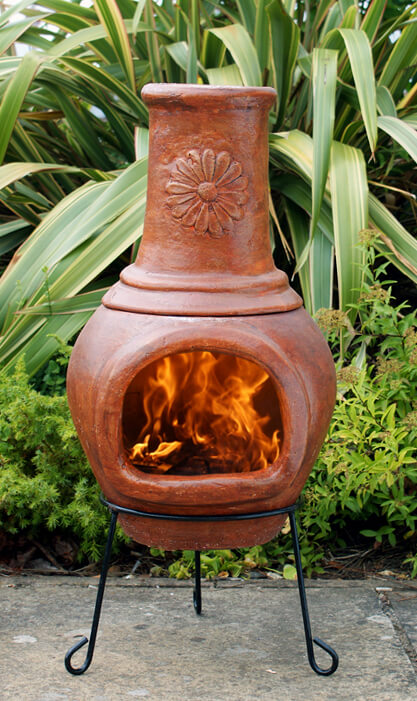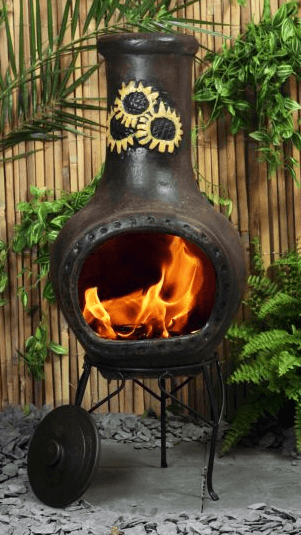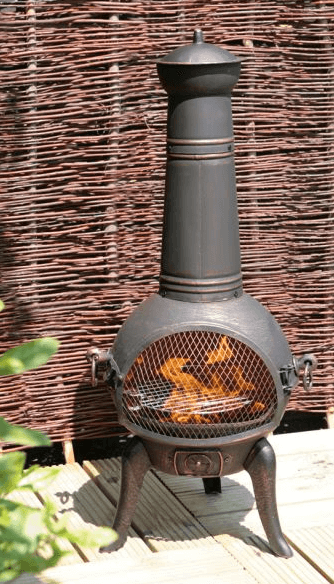What’s small, Mexican and made of clay? A chiminea! Well, although this is true, these days there are almost as many different types of chimineas as there are ways of spelling the word itself. All this choice can be a little confusing so we have prepared a guide to help you make often the firsthttps://www.primrose.co.uk/chimineas/cast-iron-chimineas decision: Which material will be perfect for you garden?

Clay
Clay chimineas are our most popular type with many of our customers enjoying the authentic feel that they create. Historically, fired clay was used as an inexpensive material used to create these fire pits which were an essential for both cooking and heating back in 17th century Mexico. The chimney directed smoke outside meaning that it could be used inside without filling your home with smoke and the design also funnelled fresh air in to fuel a hot, clean fire. This was useful for providing more heat for the home whilst meaning that there was less ash left behind as a more complete combustion took place.

In more recent times, clay chimineas are more often used in the garden and offer both aesthetic appeal and functionality. The authentic look provided by clay lends itself effortlessly to rustic design and these chimineas seem to blend in perfectly with any background. They also add a little foreign charm to a garden, especially the models with Mexican or Italian designs. For guidance on how to prepare and look after your clay chiminea, visit our page full of handy tips.
Cast Iron
Cast iron chimineas burst on to the scene later than clay, providing a different option for consumers. The different material has several advantages over clay in some areas, but also some drawbacks, it really does depend on what is more important to you and what you plan on using your fire pit for.
One of the main plus points is that unlike clay versions, you won’t have to cure before use; it’s ready to go straight away. Cast iron is a more durable material, less susceptible to damage caused by temperature change, and should outlive even the best quality clay chimineas.

In addition, they are less likely to be damaged accidently. Cast iron versions are not easily knocked or blown over as they are heavy and so more stable. This makes them ideal for cooking, and many of our cast iron versions come with a grill included.
Cast iron fire pits come in stylish colours such as bronze and black and can help create a more modern look if that coincides with the theme you wish to create in your garden. They are also easily re-paintable, whether you are looking to give it a fresh coat after it has faded over the years or after a change in colour to give an entirely new feel to your fire pit.
One slight downside is that being metal; they are prone to getting rather hot. You will need to consider where you place the fire pit. Ensure it is not pushed up against anything that may be affected by the heat and that it is placed on top of a fireproof surface. It is also wise to consider keeping it in an area where it is not likely to be bumped into when in use, especially with children around, and extra care must be taken when operating to ensure that you don’t accidently touch the hot metal.
_________

Alex works in the Primrose marketing team, mainly on online marketing.
As a psychology graduate it is ironic that he understands plants better than people but a benefit for the purpose of writing this blog.
An enthusiastic gardener, all he needs now is a garden and he’ll be on the path to greatness. Alex’s special talents include superior planter knowledge and the ability to put a gardening twist on any current affairs story.